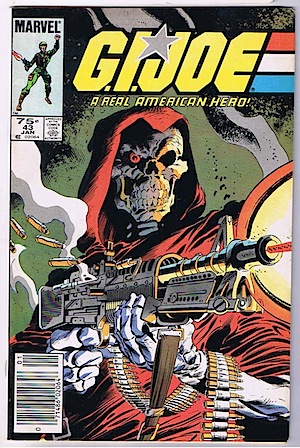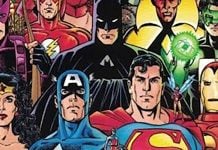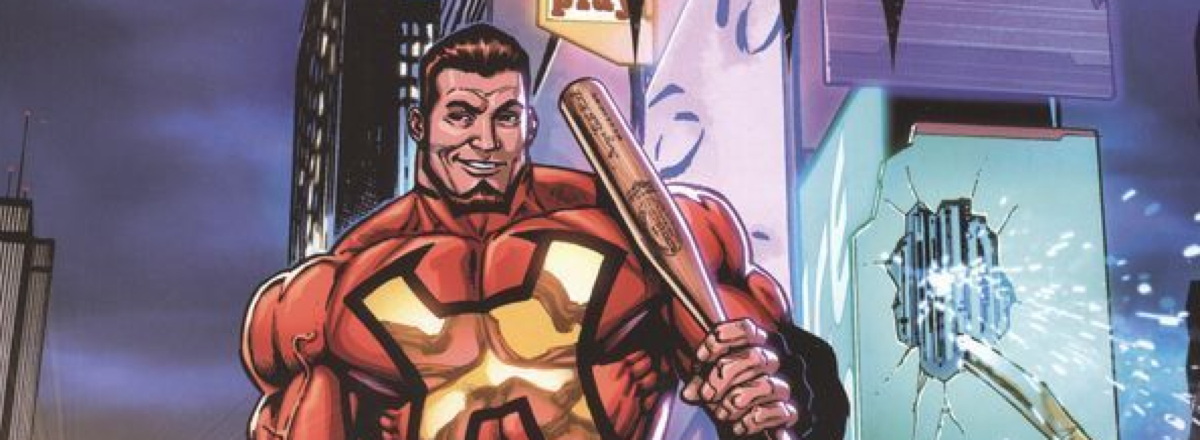§ Well, THIS is obscure and mysterious. A mere 34 miles north of San Diego lies the California Center for the Arts, Escondido, a 1500-seat amphitheater, conference center and museum. Apparently they just nailed down a budget and want to ramp up their events including a comics exhibit to draw hipsters crowd during Comic-Con:
Center officials announced last fall that another new event they’re planning is a comic book exhibit this summer during San Diego’s Comic-Con. Courtright predicted this week that the exhibit would help the center attract a younger crowd focused more on popular culture than typical visitors. On the long-term goals, Teeuwissen said he hopes to transform the former site of the center’s children’s museum into a “black box” theater.
It’s a little far for a quick run, but, hey the more comics the merrier, right?
§ Speaking of conventions, Tom Spurgeon has a novella-length report on Emerald City Comic Con and his other journeyings. It’s a picaresque tale of comics shops and Brandon Graham.
§ Jess Nevins, Alan Moore annotator extraordinaire, has posted his annotations to League of Extraordinary Gentlemen: Nemo; he invites feedback.
§ ICv2 notes that the shutdown of the Megaupload site—where many pirated movies and other files were hosted—has resulted in higher sales for movies and other forms of entertainment. Huh, well, how do you figure that?
§ Larry Hama, the man who turned G.I. Joe from a doll with a funny hand into an adventurer with a vital mythology via his work on the Marvel comics, recently wrote on Facebook:
Never got an invite to the premiere of GI Joe Retaliation, but I bet the caterers and accountants did.
§ Cambridge University’s student newspaper tackles a thorny issue:THE FUTURE OF COMICS IS IN THE PAST — but those people at Cambridge are smart, right? So they should be able to figure this one out:
Even the terminology surrounding this question is fiercely debated. Whereas most like to refer to works such as Maus as ‘graphic novels’, the term seems to be a hopeful attempt to disassociate the new breed of ‘intelligent’ comics from tales of superheroes, making a clear distinction between comic- book-pulp-fiction and high-art -visual-narratives. Publisher Dan Franklin of Jonathan Cape chooses not to make a distinction between comic books and graphic novels, although he admits that, “because the books we publish are at the more literary end of the spectrum I’m probably inclined to think of them as graphic novelists first.” Comic book theorist Scott McCloud – at the forefront of the new ‘academicising’ movement – prefers to call them ‘sequential narratives.’ However, this term is yet to catch on in popular usage. Practitioner Nick Hayes, a former student at Emmanuel College and author of acclaimed graphic novel The Rime of the Modern Mariner, is more relaxed about the matter: “people get all in a fluster about this. The most pretentious of the lot is Sequential Artist, but I think you may as well print up a T-shirt that proclaims your own self-esteem paranoia… I tend to change my job title to suit its audience.”
§ To celebrate Women’s History Month, CR is interviewing some great comics women of yore. In an interview with Louise Simonson and Ann Nocenti the following delightful exchange occurred:
Nocenti: I have no idea, actually, because I don’t know what everyone else made! [Laughter] But the thing is, I got back into comics because of stereotypes. I think there was some big controversy in some convention — I wasn’t in the industry because I was off doing other things — about how there were no women in comics, and then I got a call, “We need women in comics.” So if I got back into the industry because I’m a token female, I say great! I’m all in!
Simonson: Also, Annie, they call you up because I think they like a female face on videos and things like that. I always get people asking me to do video interviews! [Laughs] It’s pretty funny!
Nocenti: They put me on “Green Arrow,” and I have to admit, I just didn’t get Green Arrow. I struggled with him. He was a rich playboy in an armored suit who was young. I liked the old Green Arrow, the wise guy who was stealthy and a social crusader — Denny O’Neil’s Green Arrow. This was a different Green Arrow and I didn’t connect with him. Now, doing “Katana” and “Catwoman,” I have no idea if there was a meeting where someone said, “Lets give the girl writer the girl books,” but I instantly related to those characters! It’s fun to write girls.
Simonson: I hear you, and I agree!
The whole thing is well worth reading, and more in the series of interviews will be up later.








Comics, comic books, graphic albums, graphic novellas, graphic novels, sequential narratives…
It seems the more exclusive the label, the more reclusive it grows, as it tries to cut itself apart from the “lower” aspects of the medium to gain better mainstream acceptance. So why not go to the opposite end of the spectrum, and label them all as “comix”, in the underground, throwaway, 1960s anti-everything but Art way? Not every book can reach the top of the pyramid, but they all start at the bottom one way or another.
I won’t speak to comics or movie downloads, but a lot of the reason the music industry is feeling a resurgence in sales is due to streaming services like Spotify and Pandora, where people don’t feel a need to pirate music in order to listen to it and fans are turning around buying the music they really like.
Not to shoot down Icv2’s reasoning, but there are *hundreds* of other file-sharing sites on the Web where someone could do exactly the same kind of traffic in pirated media (not to mention torrenting?).
from ICV2 “The study did not examine sales of packaged media”
They only looked at digital sales.
My guess is that better access to digital goods rather than removing Megaupload from the environment is the reason for the increase in sales.
“Comic book theorist Scott McCloud – at the forefront of the new ‘academicising’ movement – prefers to call them ‘sequential narratives.’ ”
Oy. I’m pretty sure I’ve never used the term ‘sequential narratives’ (and I use ‘sequential art’ only when talking definitions).
I just call ’em “Comics.” Look at the titles of my books.
Also: ‘academicising movement?’ Eww.
I’m pretty sure I’ve never used the term ‘sequential narratives’ (and I use ‘sequential art’ only when talking definitions).
You don’t seem to have used sequential narrative, but a lot of other people combine references to your work with the use of sequential narrative. It’s easy to see why people would think you use the expression.
SRS
You don’t seem to have used sequential narrative, but a lot of people have combined references to your work with the use of the expression. Easy to see why people would think you use it.
SRS
After the first awful GI JOE movie, I’m surprised Hama would even want to be associated with the film franchise.
They’re doing him a favor by not inviting him!!! LoL :-P
Comments are closed.